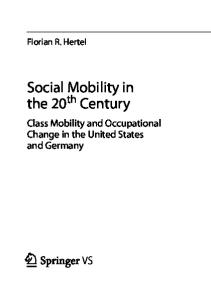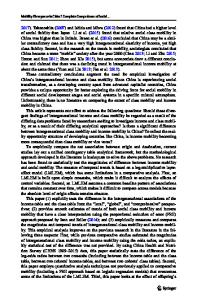Recovery of mobility function and life-space mobility after ischemic stroke: the MOBITEC-Stroke study protocol
- PDF / 736,792 Bytes
- 11 Pages / 595.276 x 790.866 pts Page_size
- 97 Downloads / 325 Views
STUDY PROTOCOL
Open Access
Recovery of mobility function and lifespace mobility after ischemic stroke: the MOBITEC-Stroke study protocol R. Rössler1,2, S. A. Bridenbaugh2, S. T. Engelter3,4, R. Weibel5, D. Infanger1, E. Giannouli1, A. Sofios5, L. Iendra3,4, E. Portegijs6, T. Rantanen6, L. Streese1, H. Hanssen1, R. Roth1, A. Schmidt-Trucksäss1, N. Peters3,4,7† and T. Hinrichs1*†
Abstract Background: Stroke is a major cause of disability and stroke incidence increases with age. Stroke frequently results in permanent limitations of mobility, and, consequently, the need for the help of others in activities of daily living. In order to optimize rehabilitative efforts and their functional outcomes, detailed knowledge of the functional recovery process, regarding mobility, is needed. Objectives of the MOBITEC-Stroke study are: 1.) To characterize mobility, including lower extremity physical function (LEPF) and life space (the geospatial extent of all of a person’s movements), and changes in mobility within the first year after stroke. 2.) To identify and characterize subgroups with different mobility trajectories. 3.) To evaluate whether changes in LEPF are associated with changes in lifespace. 4.) To evaluate participants’ reasons for going outdoors, transportation use, and assistance needed for outdoor movement. Methods: Patients with incident first stroke who live in their own homes (target N = 59, based on sample size calculation) will be included in this cohort study. At 3, 6, 9, and 12 months after stroke a battery of mobility tests will be performed at the study centre, including laboratory-based tests of balance and strength, and quantitative gait analysis. Life-space assessment (including 1-week GPS measurements) will be performed in participants’ real life. Semantic information on visited locations (reasons for going outdoors, transportation use, assistance needed) will be collected by using interactive digital maps. Linear mixed effects models will be used to model the trajectories of mobility measures for the total sample and for predefined subgroups. As an exploratory analysis, growth mixture models (GMMs) will be used to identify relevant subgroups with different trajectories. Linear mixed effect models will be used to test whether changes in LEPF parameters are associated with changes in life-space. Participants’ motivation for going outdoors, transportation use, and assistance needed for outdoor mobility will be analysed descriptively. (Continued on next page)
* Correspondence: [email protected] † N. Peters and T. Hinrichs contributed equally to this work. 1 Division of Sports and Exercise Medicine, Department of Sport, Exercise, and Health, University of Basel, Birsstrasse 320 B, 4052 Basel, Switzerland Full list of author information is available at the end of the article © The Author(s). 2020 Open Access This article is licensed under a Creative Commons Attribution 4.0 International License, which permits use, sharing, adaptation, distribution and reproduction in any medium or format, as long a
Data Loading...











